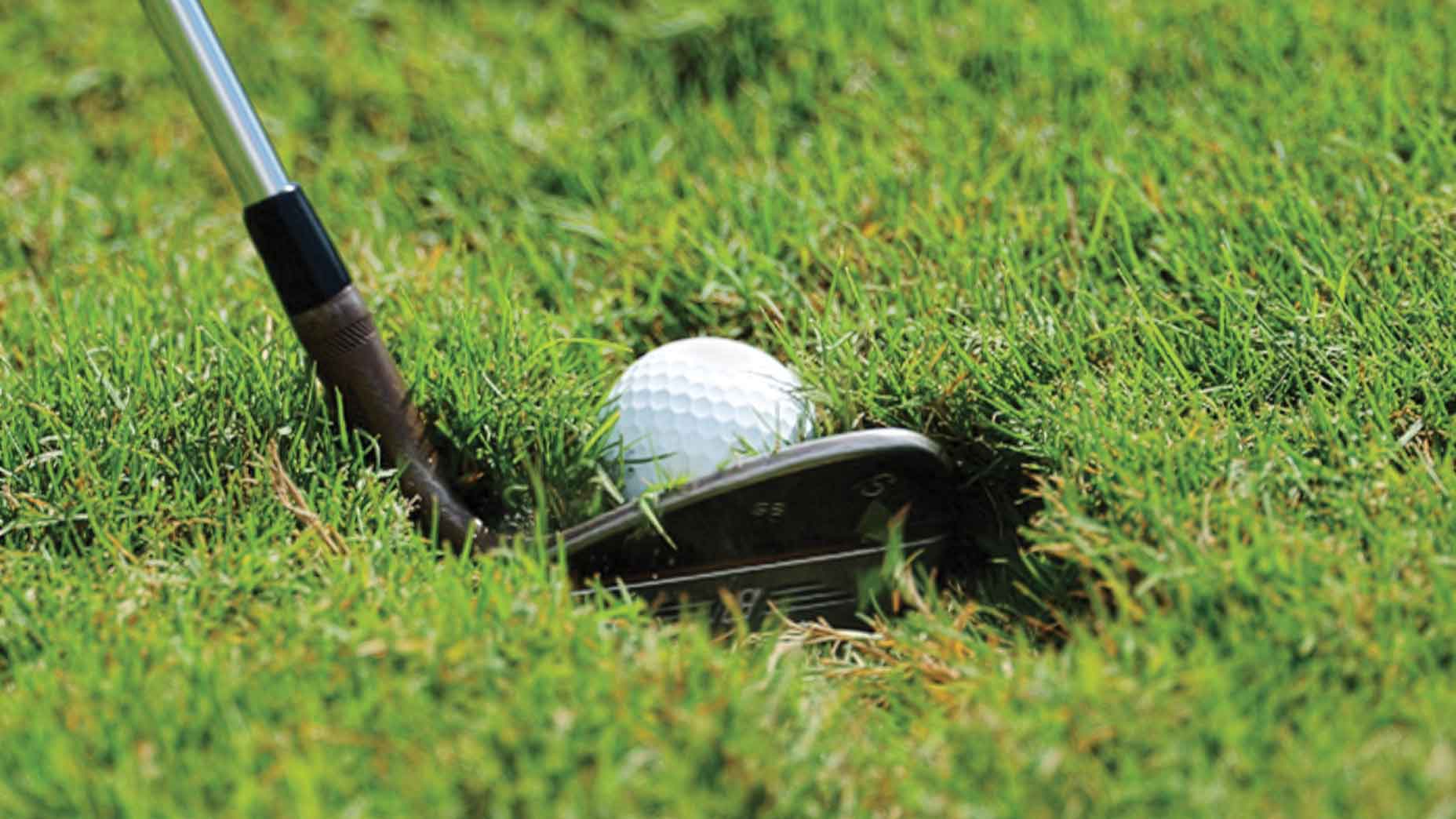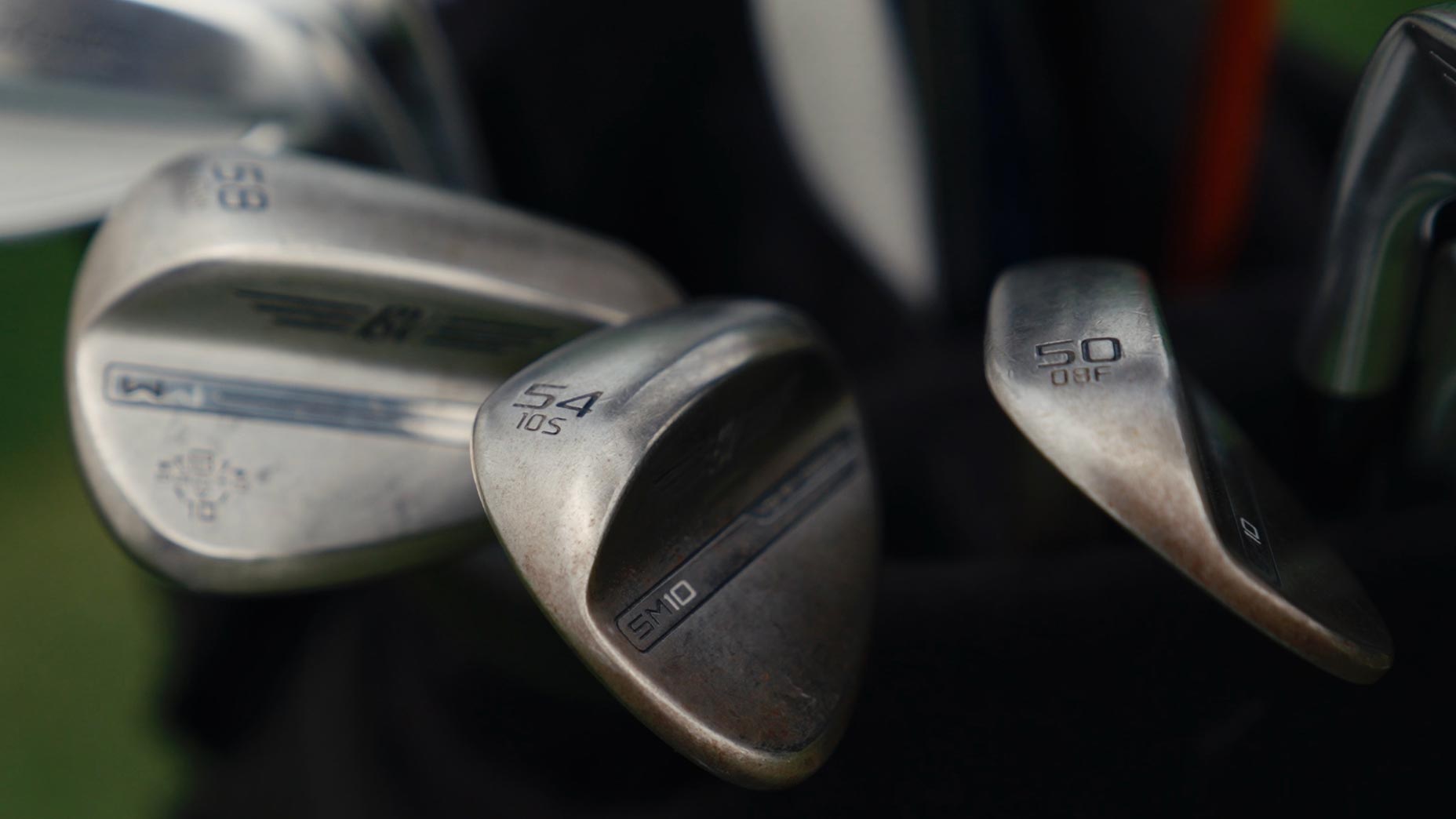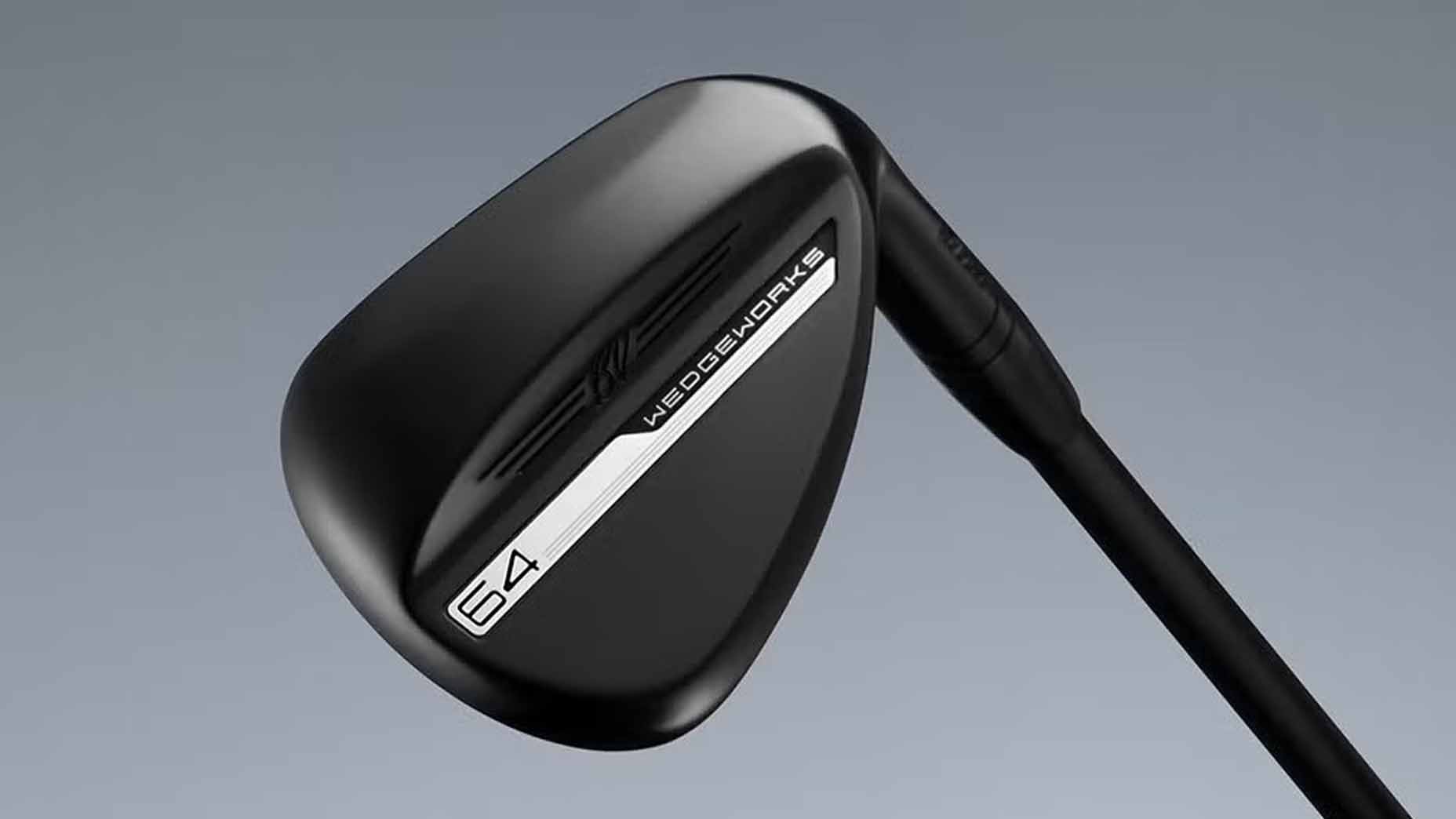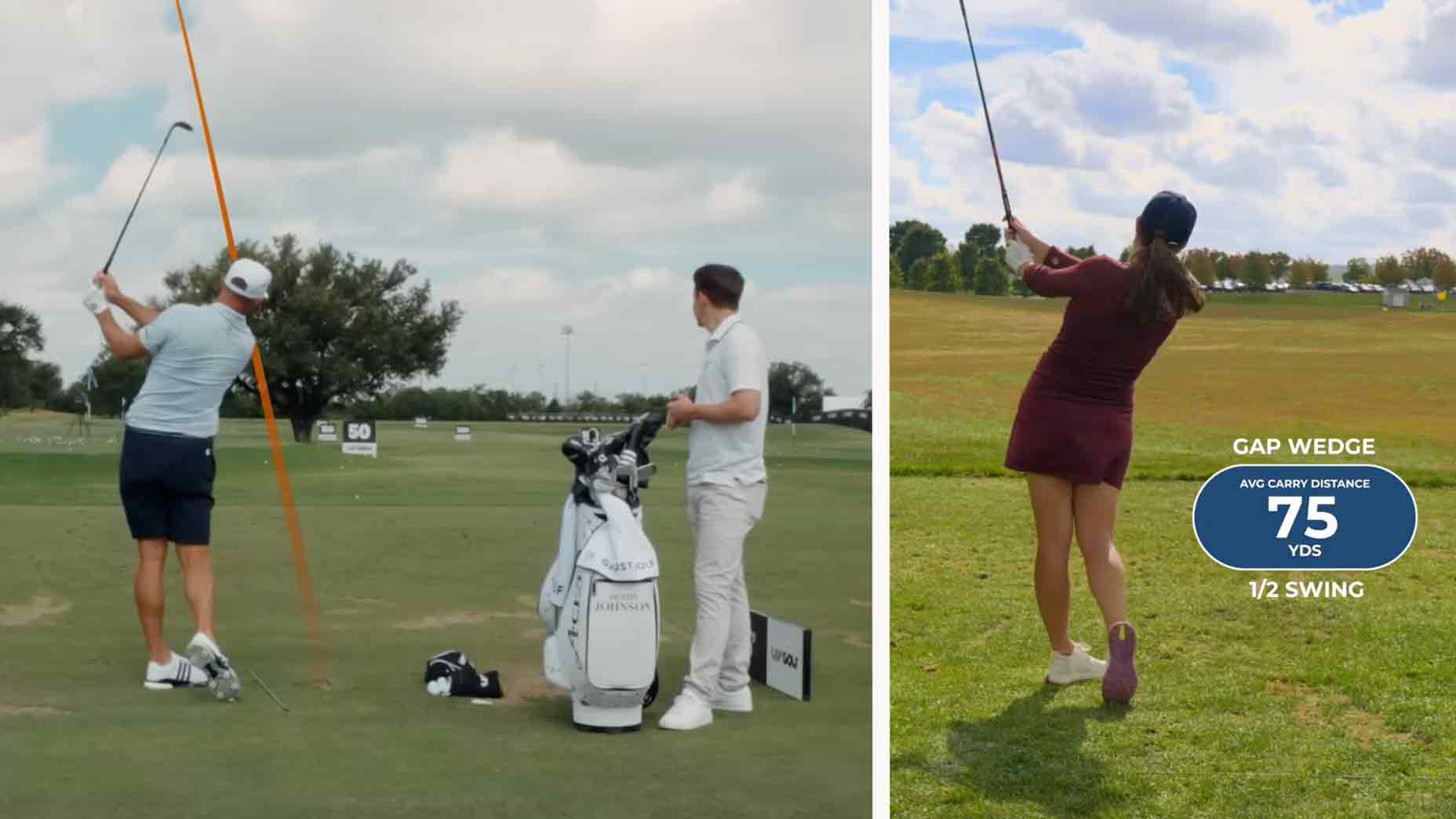Welcome to Play Smart, a new game-improvement column that drops every Monday, Wednesday, and Friday from Director of Game Improvement content Luke Kerr-Dineen to help you play smarter, better golf.
I’ve never met a recreational golfer who wants less backspin with their wedges. Not because they need it, particularly, but because there’s something wonderfully swashbuckling about it. Watching a ball land, hop, then rocket backwards toward the hole — it’s the ultimate pro move, impossible not to be impressed by.
Backspin, in simplest terms, is the product of a few things: The speed with which the clubhead is moving, the loft of the club you’re hitting, the angle which your clubhead strikes the ball, and the friction between the ball and the clubface at the moment of impact. This last point is especially important, and it’s why golf clubs have grooves. Grooves create friction between the clubface and the golf ball; they grab the golf ball at the moment of impact to create more backspin. Without getting too in the weeds, when it comes to clubface grooves, all you really need to remember is: clubface grooves = more friction = more backspin.
If you reduce that friction by doing things like wetting the clubface, you’ll have less backspin. Another thing that can reduce backspin? Grooves that have worn down over time, which — you guessed it! — reduces friction and therefore backspin.
It’s why fresh grooves on new wedges are important. So important that we wanted to prove it to you, so we had GOLF senior equipment editor Andrew Tursky and True Spec Golf’s DJ Lantz conduct a test: Tursky took his gamer wedge that he’s been using for about a year and hit shots of 30, 60 and 90 yards, and then repeated the task with a never-before-hit TaylorMade Milled Hi-Toe wedge.
You can watch the full video at the top of the page, or scroll down for the results.
RESULTS: Old grooves vs. new grooves

I’m not going to lie, I was expecting a difference, but I wasn’t expect quite as big a difference as the one Tursky saw. From 90 yards with the new wedge, most notably, his spin jumped 1,800 RPMs (rotations per minute), which had the side effect of making the ball fly slightly shorter, improving his distance control.
The lesson? That grooves are super important! So important that you should pay attention to them more than you probably are already, and invest in a new set of wedges almost every season. If you’re not sure if the grooves on your current gamers are too worn and costing you speed, I’d recommend that you talk to a good clubfitter like our friends over at True Spec Golf to get dialed-in properly.









